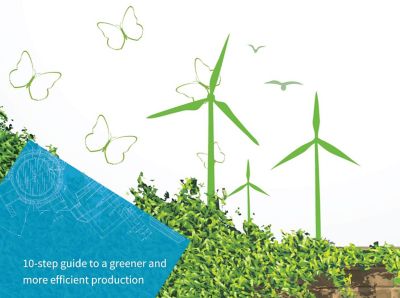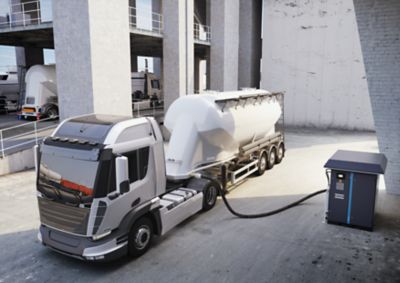Spoiler alert: they don't. While it’s true that VSD compressor equipment is typically more efficient than fixed-speed machines, there is more beyond the surface.
To achieve up to 60% energy savings, you’ll want a machine with the best components and the smartest working principle. With this, each manufacturer takes a different approach. Therefore, it’s good to know what’s inside the compressor you’re purchasing and how it works.
For example, with Atlas Copco, each variable speed drive (VSD) air compressor is engineered for high efficiency. This means using the motor, element, inverter, controls, and sensors that maximize the benefits a VSD machine can provide. However, not every VSD air compressor uses these quality components.
This is important to note because of how overall performance, which includes start/stop energy losses, is impacted. Since up to 80% of the cost of owning and operating an air compressor is its electricity cost, differences in working principles can greatly influence operational expenses.
Fact: VSD compressor start/stop losses are common
As you may know, the main advantage of using a VSD instead of a fixed-speed machine is its ability to change motor speed to meet demand. This allows for reduced electricity consumption when less compressed air is needed. As a result, VSD compressors don't need to be fully switched off when demand is low. Instead, the motor slows to a lower speed. This saves energy compared to fixed-speed machines.
That said, when air demand slows down to less than the element’s minimum speed can handle, the compressor must switch off. This is where start/stop losses, and more specifically unload and blow-off losses, have an impact. Many VSD compressors will go into unload, before turning off completely. While in unload, the motor runs without producing air, which constitutes pure energy waste.
At the same time, air pressure is blown off (vented) – allowing the machine to be shut off. That’s because these VSD compressors can’t start up again with a system under pressure. Unload and blow-off energy losses are built into the working principle of these compressors; they cannot be avoided and their cost quickly adds up.
Atlas Copco VSD compressors do not experience these high start/stop energy losses. Their inlet valve completely closes – stopping the machine while maintaining internal pressure. As a result, there are no unload losses and much less blow-off losses. This is because complete depressurization isn’t necessary. Therefore, less energy is needed to meet increased demand. An Atlas Copco VSD compressor can build up to the right pressure more dynamically and precisely.
The ability to operate with a lower set point than other VSD compressors can also make a meaningful difference in energy use. It also means Atlas Copco compressors can resume faster, allowing for increased productivity. This impacts both operational and ownership costs.
False: VSD compressors all come with the same technology
In addition to the working principle, the technology featured inside VSD compressors greatly varies by manufacturer. Some machines simply add an inverter to the drivetrain, while others innovate further. With Atlas Copco, proprietary technology is used in the element and inverter. In addition, Atlas Copco VSD compressors feature motors with the highest possible IE efficiency rating.
Furthermore, to maximize performance, an air compressor manufacturer should invest in the most up to date tools. For example, Atlas Copco VSD compressors are available with SMARTLINK, a cloud-based monitoring system for analyzing maintenance, reliability, uptime, air compressor room conditions, and overall performance. In addition, Atlas Copco offers central controllers to ensure everything runs in equilibrium. This is useful for running multiple machines as a complete system.
Other considerations for investing in a VSD compressor
As pointed out, there are several ways a VSD compressor is assembled. Depending on your environment, you may want a machine with a high dust protection rating (IP54). In addition, it’s important to consider operating conditions, like heat, humidity, and other factors. Again, this is where components matter – since not all VSD compressors are capable of handling tough environments.
In addition, since a VSD motor uses an inverter to change speed, there are different ways this is implemented. The most common motors found in VSD compressors are rotary screw and interior permanent magnet (iPM). The latter is optimal as it reduces slip and heat losses, meaning lower energy consumption.
Another thing to consider is the sizing and placement of your compressor. Atlas Copco VSD compressors have a smaller footprint than fixed speed machines and other VSD compressors. They are also quieter due to not constantly running at full speed all day long. Both of these factors can mean less ambient heat and noise, resulting in better working conditions.
We’re here to help
So no, not all VSD compressors are the same. In fact, the working principle of VSD compressors can vary greatly. Where this is most relevant is with start/stop losses, and onboard technology and innovations.
When investing in equipment such as a VSD air compressor, it's important to go with a brand that is committed to long-term support. This is because the lifespan of a compressor is typically 8-10 years.
Whether you're purchasing a compressor for the first time or replacing existing equipment, we're here to help. Feel free to contact our knowledgeable team any time.


